So, you want to buy a skimboard but don’t know what size to get?
You’re not alone! A lot of people have no idea what size skimboard they need. That’s why we put together this comprehensive sizing chart – so you can figure out the perfect board for your needs.
Read on to find out everything you need to know about skimboard sizing before you make your purchase!
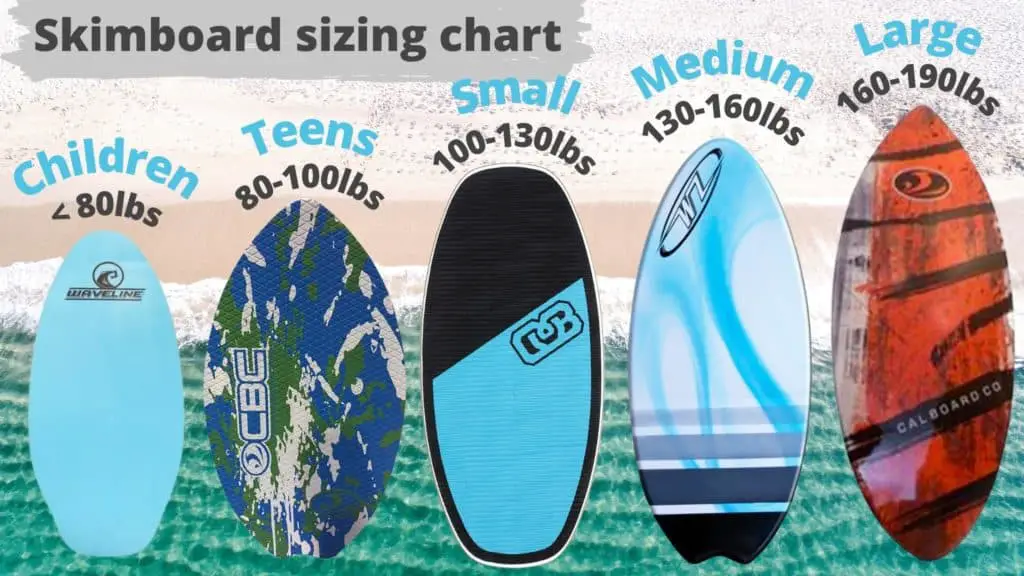
If you’re anything like me, then you love spending time at the beach. And what could be more fun than surfing the waves on a skimboard?
If you’re new to skimboarding, or just want to get a better understanding of the sizing options available to you, then you’ve come to the right place.
In this article, we’re going to provide you with everything you need to know about skimboard sizes – from children’s boards to your average large all-American male.
There are many different factors to consider when choosing a skimboard shape and size. It’s important to think about the type of skimming you want to do, your weight and height, and the condition of the waves.
With so many options available, it can be tricky to decide which board is right for you.
In this post we'll cover:
How to size your skimboard
There are a few factors you need to take into account when sizing your skimboard. These include:
• Your height and weight
• The level of difficulty you are looking for (beginner, intermediate, or advanced)
• The type of board you want (flat, hybrid, or displacement)
Once you have an understanding of these factors, you can use the following chart to determine the right size skimboard for you.
Skimboard sizing chart
Unlike some other boards, the size skimboard you’ll need doesn’t solely depend on your weight, but also your height.
Weight is still the important factor here, but if you’re an intermediate or experienced wave rider, your skimboard’s nose should reach anywhere between your chest to your chin.
If you’re just beginning, you can sand slide on a much smaller board though.
Let’s look at the size skimboard you need for your weight in this skimboard size chart:
| Size | Weight range | Board dimensions |
|---|---|---|
| Children | Below 80 lbs (below 36kg) | 45.00 x 19.00 inches |
| Teens | 80 to 100 lbs (36 to 45kg) | 48.00 x 19.25 inches |
| Small (S) | 100 to 130 lbs (45 to 59kg) | 51.00 x 19.75 inches |
| Medium (M) | 130 to 160 lbs (59 to 75kg) | 52.00 x 20.00 inches |
| Large (L) | 160 to 190 lbs (75 to 86kg) | 52.50 x 20.50 inches |
| Extra Large (XL) | 190 to 210 lbs (86 to 95kg) | 53.00 x 20.75 inches |
| Extra Extra Large (XXL) | 210 to 220 lbs (95 to 100kg) | 54.00 x 21.50 inches |
How to pick the right skimboard shape
As a skimmer, you want a shape that gives you the best performance. The curve of the head of your skimboard is called the rocker. This determines how easily you can get from the sand to the water. So, the more curve the better.
Skimboard shapes
There are five common shapes:
- Proto
- Thomas
- Sacramento
- Raza
- Streamline
Proto has a wide waist and a narrow tail and nose which provide stability and make it good for flatland skims.
A great example of a Proto shape is this DB Skimboards Proto Plank:
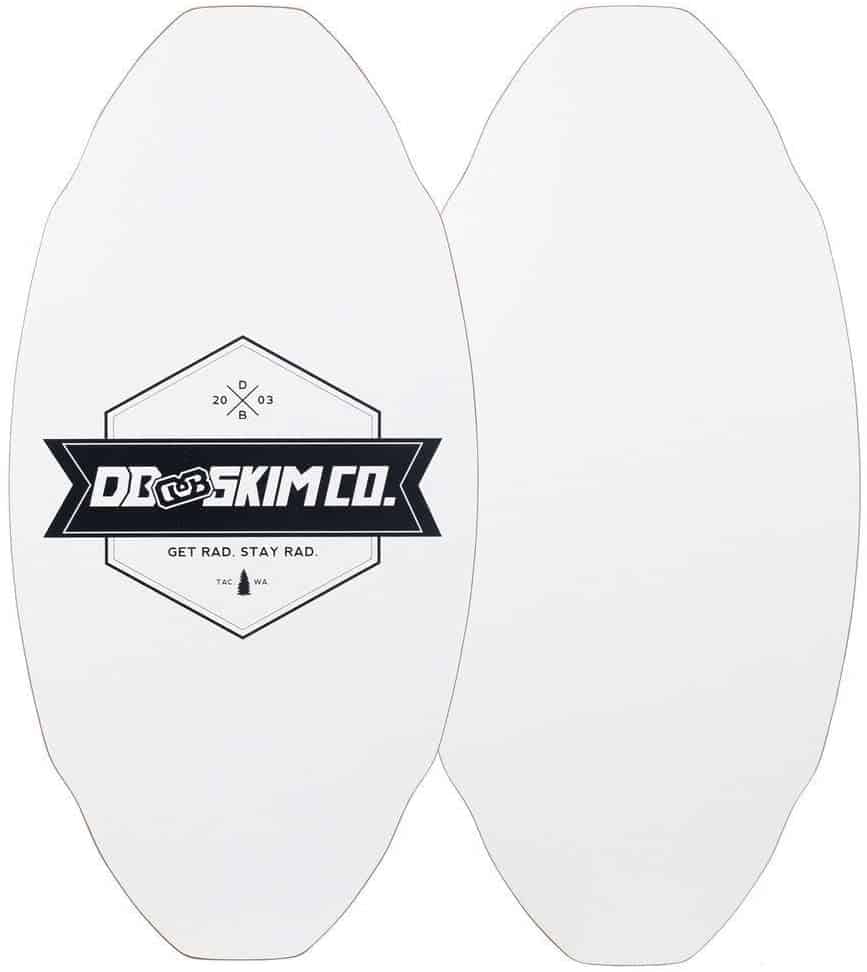
You can see the symmetrical (or twin tip) shape, which is perfect for flatland skimming.
Plus, the 3D rocker provides more leverage to pop higher and with more control. Traditional rocker skimboards can be dangerous because they are more likely to catch an edge.
Flatland skimboard shapes
Most flatland skimboards are twin tip, which means that the nose and the tail have the same shape. This lets you do tricks in both directions.
The most common twin tip shapes are Streamline and Proto. Streamline has more maneuverability, while Proto is more stable.
You can see this DB Skimboards Standard Streamline is a lot more narrow towards the middle, while still retaining that symmetrical shape:
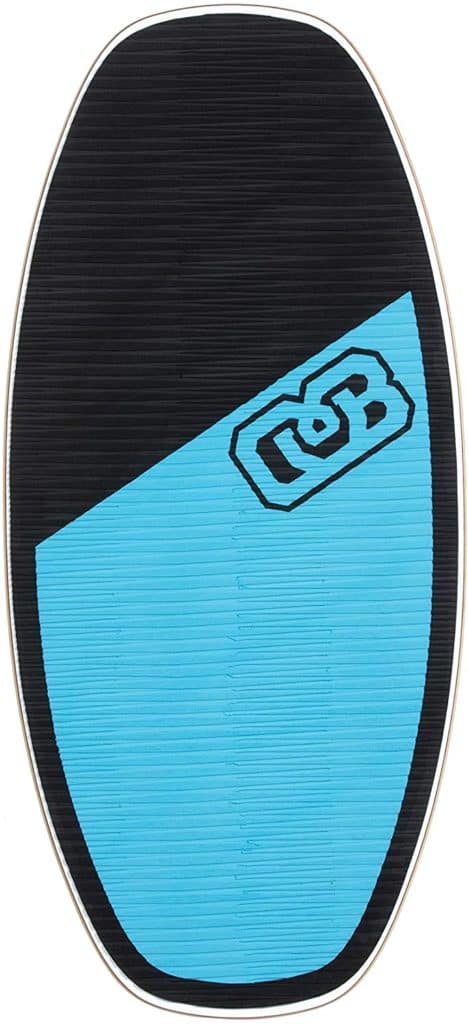
Flatland skimboards are like skateboards in that they can be used for tricks and have a durable construction. This makes them perfect for people who want to transfer their skateboarding skills onto the water.
Wave skimboard shapes
Boards with different tip and toe can help you skim waves. Boards that are directional like this relate more to surfing.
The rocker is the nose (tip) of the board. If it is curved more, it will be easier to skim wavy waters but it will make you go slower.
If the nose is flatter with less curvature, it will be better for calm waters where you can move faster than with wave skimming.
- A shallow rocker is better for calmer, flat water
- A steeper rocker is better for higher was and rough water
Sacramento for example is a good board shape for high speed because it is wide and has a profile that makes it easy to move around on the board.
It also has double cuts on the sides to help make it easier to pop and still move in a straight line.
Raza is like Sacramento but offers more flexibility and maneuverability.
The tail and nose make it easier to swing, and the shape makes it better for doing technical skills.
Skimboard tail shapes
There are several types of tails on a skimboard. The most common are the:
- fish tail
- pintail
- squash tail
- round tail
Each type of tail affects how the board moves through the water.
For example, the pintail provides a good balance, while square tails (and also W-tails) make the board more agile and better for tricks.
What does a fish tail do on a skimboard?
The fish tail gives your board more control and performance when turning in small waves. The dual points help the board stick to the wave and give you more options for maneuvers.
This California Board Company CBC Foot Grabber is a great example of this:
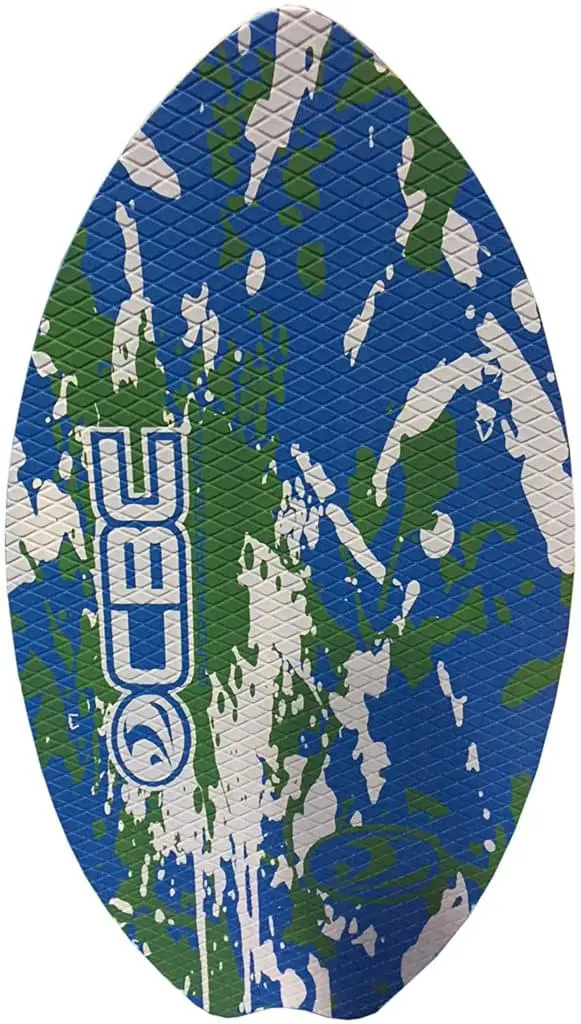
You’ll be able to keep your balance and not fall off, plus you’ll feel more confident while skimming on it.
The resin coating will make it last longer than other wood boards and it’s rocker is great for preventing nose digging.
What does a pintail do on a skimboard?
Pin tails are mostly found on skimboards designed for big waves. This type of tail gives you more control in huge waves.
The very narrow shape means the tail sinks deeper in the water, providing extra “traction”.
This is helpful when surfing in big waves and tubes, when you need more hold and control than maneuverability and the ability to pivot quickly.
This Driftsun Fiberglass Performance Skimboard is a good brand that produces these:
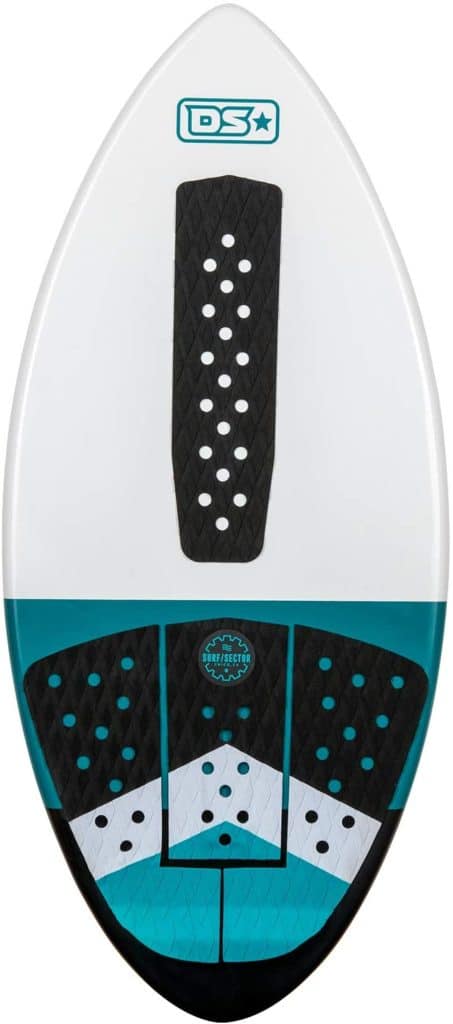
What does a squash tail do on a skimboard?
The squash tail is a very versatile type of tail. It is the most common one and square in shape.
This creates a quick release. The rounded corners provide hold, similar to the round tail.
Squash tails are commonly used by professional skimboarders because they are optimal for quick, sharp turns (bigger and wider squash tails will provide a looser, faster surfboard while small, narrow squash tails will give surfers extra hold and control).
This Waveline Neon is a brand that makes these pretty cheaply while still retaining good quality:
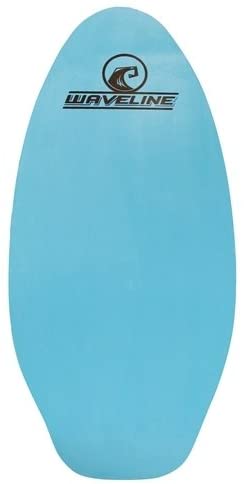
The perfect balance of weight and durability with a stable, smooth ride.
What does a round tail do on a skimboard?
The round tail is a type of skimboard tail that is between a pin tail (big wave tail) and a performance tail (squash tail).
This type of skimboard tail has more volume which makes it faster and easier to turn.
The round, continuous curves help the water stay on the board longer, giving you more hold.
It’s good for big drawn-out carves, control in hollow surf, and keeping your speed even in weaker parts of the wave.
This Bindy Australia Skimboard is a perfect example:
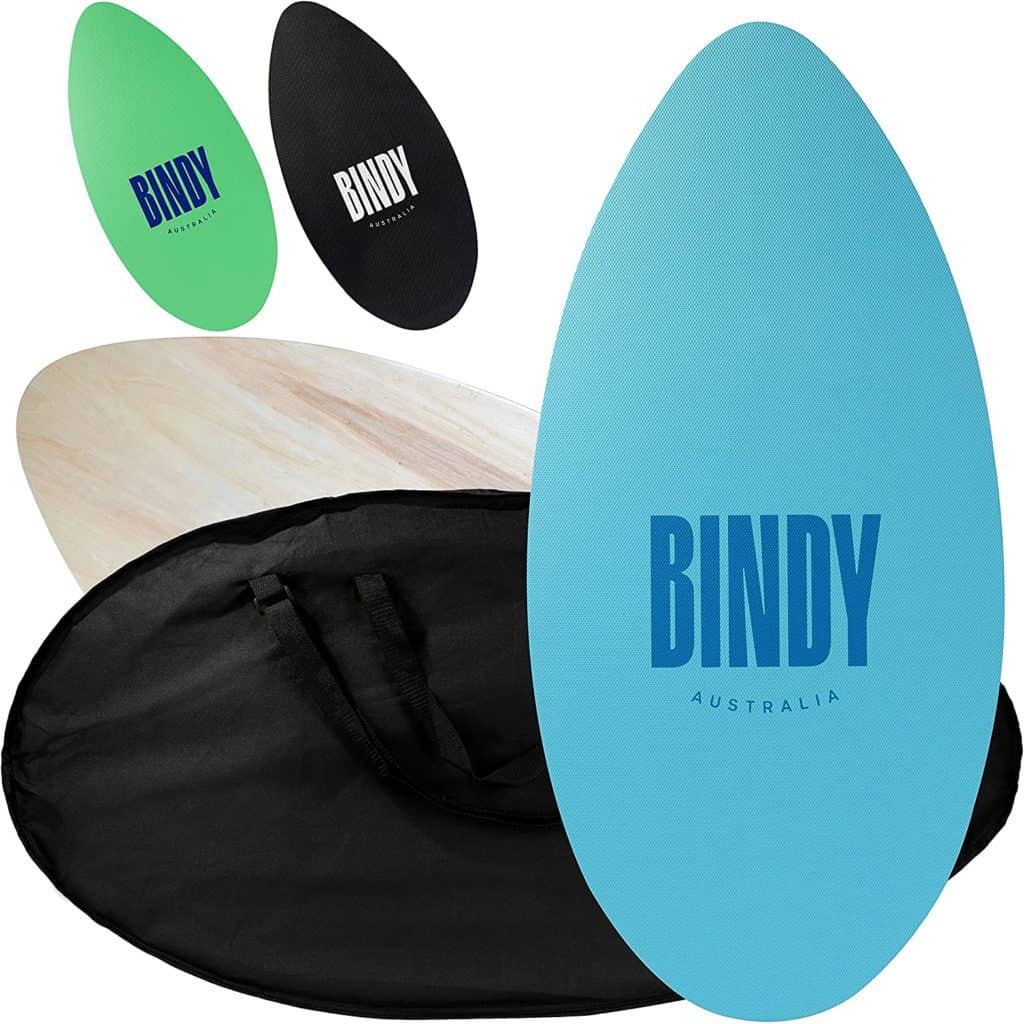
A wooden board with a skimboard bag that comes with it.
Skimboard thickness
The thickness of the board affects how far it will go in the water. Thicker boards will travel further in the water, but it will also be harder to maneuver because of its weight.
The good thing about a thicker board is that it has more float than a thin one.
There are four standard thicknesses:
- 3/4 inches
- 5/8 inches medium
- 3/4 inches tapered
- 5/8 inches thin
Why choosing the right size board is important
- You’ll be more comfortable and have more control over a board that is the right size for you.
- A skimboard that is too small or too large for you will be difficult to control and could lead to accidents.
- A board that is the wrong size for your height and weight can make it difficult to catch waves and may even cause you to fall off.
Conclusion
There are many different types of skimboard shapes and sizes to choose from. It is important to select the right board for your height, weight, and experience level.
A board that is too small or large can be difficult to control and may lead to accidents.
A board that is the wrong size for your height and weight can make it difficult to catch waves and may even cause you to fall off.
With so many shapes and sizes to choose from, it is important to find out if you need a bigger board or if you’re fine some of the medium and large sizes for your individual needs.
